
 Neanderthals: Shared DNA and Variant Traits - When reviewing my DNA test results from 23andMe, the "Neanderthal Ancestry" section states "We've identified 272 genetic variants that can be traced to the Neanderthals, ancient humans who interbred with modern humans before going extinct 40,000 years ago - this is less than 54% of 23andMe customers and your DNA accounts for less than 4% of your overall DNA". So, I immediately furrowed my (Neanderthal) brow, joined the 23andMe discussion forum and searched for more answers on what this DNA result actually meant. Upon reading my DNA results and the related White Paper 23-05 "Neanderthal Ancestry Inference", some of the discussions on the topic, and further research on the Wikipedia.org: Neanderthal page, I found a wealth of information.
Neanderthals: Shared DNA and Variant Traits - When reviewing my DNA test results from 23andMe, the "Neanderthal Ancestry" section states "We've identified 272 genetic variants that can be traced to the Neanderthals, ancient humans who interbred with modern humans before going extinct 40,000 years ago - this is less than 54% of 23andMe customers and your DNA accounts for less than 4% of your overall DNA". So, I immediately furrowed my (Neanderthal) brow, joined the 23andMe discussion forum and searched for more answers on what this DNA result actually meant. Upon reading my DNA results and the related White Paper 23-05 "Neanderthal Ancestry Inference", some of the discussions on the topic, and further research on the Wikipedia.org: Neanderthal page, I found a wealth of information. 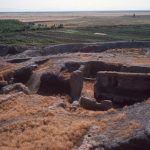 Çatalhöyük: The First Town of the Neolithic Age - Lying on the Konya plain in the south of modern day Turkey, Çatalhöyük is the world’s earliest known town. Founded roughly 9500 years ago, the settlement covered 35 acres — making it larger than the ancient city of Jericho, founded some 500 years later. Archaeological evidence unearthed at Çatalhöyük suggests that the town’s 5000 to 8000 residents lived in a society with no class system or gender barriers. They subsisted on cereal farming, the raising of livestock and, most importantly, the trading in black obsidian mined from the mountain Hasan Dag, located 87 miles to the east. Most interesting still was the town’s configuration. All homes in Çatalhöyük were built from sun-dried brick and entered through the roof. There were no streets, alleyways or plazas in the town — each house was built wall-to-wall to its neighbor. The result was a large cube, and eventually a mound, whose outer most…
Çatalhöyük: The First Town of the Neolithic Age - Lying on the Konya plain in the south of modern day Turkey, Çatalhöyük is the world’s earliest known town. Founded roughly 9500 years ago, the settlement covered 35 acres — making it larger than the ancient city of Jericho, founded some 500 years later. Archaeological evidence unearthed at Çatalhöyük suggests that the town’s 5000 to 8000 residents lived in a society with no class system or gender barriers. They subsisted on cereal farming, the raising of livestock and, most importantly, the trading in black obsidian mined from the mountain Hasan Dag, located 87 miles to the east. Most interesting still was the town’s configuration. All homes in Çatalhöyük were built from sun-dried brick and entered through the roof. There were no streets, alleyways or plazas in the town — each house was built wall-to-wall to its neighbor. The result was a large cube, and eventually a mound, whose outer most…  Chauvet Cave – A Prehistory Masterpiece - Chauvet Cave was first discovered by Jean-Marie Chauvet in 1995. It is located in southeast France and has been dated between 30,000 and 33,000 years B.P. (Before the Present). These dates place the drawings in the Auriganacian, or the early Upper Paleolithic period. This era is defined by the functionally flexible stone tool industry, their manufacture of body ornaments and sophisticated cave art. By 35,000 years B.P. the Auriginancian era was established around Europe, including France, Britain and Belgium. From these areas teeth, mammoth ivory and shell have been recovered in the shape of beads and other jewelry. Also found were a variety of antler points and needles suggesting the production of clothing such as leggings and coats far more suitable for the climate than the Neanderthal’s use of unprocessed fur and animal hides. The production of these goods is considered to be the emergence of ‘modern’ behaviour. On the…
Chauvet Cave – A Prehistory Masterpiece - Chauvet Cave was first discovered by Jean-Marie Chauvet in 1995. It is located in southeast France and has been dated between 30,000 and 33,000 years B.P. (Before the Present). These dates place the drawings in the Auriganacian, or the early Upper Paleolithic period. This era is defined by the functionally flexible stone tool industry, their manufacture of body ornaments and sophisticated cave art. By 35,000 years B.P. the Auriginancian era was established around Europe, including France, Britain and Belgium. From these areas teeth, mammoth ivory and shell have been recovered in the shape of beads and other jewelry. Also found were a variety of antler points and needles suggesting the production of clothing such as leggings and coats far more suitable for the climate than the Neanderthal’s use of unprocessed fur and animal hides. The production of these goods is considered to be the emergence of ‘modern’ behaviour. On the… 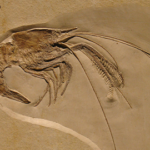 Found Fossils, Dinosaurs and the History of Extinction - Though the term “fossil” – a derivation of the Latin word for “dug up” — was first used in 16th century France, the petrified impressions of centuries old flora and fauna — including some of what later come to be known as dinosaurs — have been known to man, though wholly misunderstood, since the dawn of civilization. For thousands of years in China, the gigantic remains of prehistoric lizards and mammals were used as the principle justification for the existence of dragons and even prescribed as a folk medicine. Meanwhile, in the West, scholars from Aristotle to Leonardo da Vinci concluded that fossils were indeed proof of ancient life, while less sound conclusions — such as that fossils were evidence of a long extinct race of giants and the Biblical flood — were propagated by thinkers seeking to reconcile natural science with theology.
Found Fossils, Dinosaurs and the History of Extinction - Though the term “fossil” – a derivation of the Latin word for “dug up” — was first used in 16th century France, the petrified impressions of centuries old flora and fauna — including some of what later come to be known as dinosaurs — have been known to man, though wholly misunderstood, since the dawn of civilization. For thousands of years in China, the gigantic remains of prehistoric lizards and mammals were used as the principle justification for the existence of dragons and even prescribed as a folk medicine. Meanwhile, in the West, scholars from Aristotle to Leonardo da Vinci concluded that fossils were indeed proof of ancient life, while less sound conclusions — such as that fossils were evidence of a long extinct race of giants and the Biblical flood — were propagated by thinkers seeking to reconcile natural science with theology.  History of Megalithic Europe - Sometime between 4500 and 1200 B.C. an ancient civilization created large megalithic monuments in the regions that today form the countries of Spain, France, Ireland, Britain and Sweden. Archaeologists believe the civilizations that built these megalithic structures throughout Western Europe may have developed farming around 4500 B.C. Several centuries later, the first megaliths were built in Brittany and Ireland in approximately 4300 B.C., followed by the building of more elaborate megalithic structures in the centuries that followed. The most famous of these megalithic monuments are Stonehenge, the Ring of Brodgar and Stoney Littleton.
History of Megalithic Europe - Sometime between 4500 and 1200 B.C. an ancient civilization created large megalithic monuments in the regions that today form the countries of Spain, France, Ireland, Britain and Sweden. Archaeologists believe the civilizations that built these megalithic structures throughout Western Europe may have developed farming around 4500 B.C. Several centuries later, the first megaliths were built in Brittany and Ireland in approximately 4300 B.C., followed by the building of more elaborate megalithic structures in the centuries that followed. The most famous of these megalithic monuments are Stonehenge, the Ring of Brodgar and Stoney Littleton. 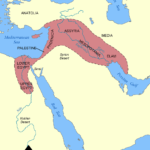 The Fertile Crescent and First Farmers - The first farmers settled in the Fertile Crescent along the Euphrates and Tigris river valleys (an area covered by present day Iraq, Syria and Azerbaijan) around 10,000 B.C. The favorable climate and topography of this region permitted the Cro-Magnons and their progeny to experiment in agriculture by growing staple crops like wheat and barley, which they used to make bread, an essential part of the diet of every early civilization. These agriculture based communities represented a fundamental shift in the mindset of early humans. Where in the past early humans had followed their food as hunter gatherers, now, they discovered a means to sustain themselves by manipulating the natural resources and animal life in their immediate environment. Soon semi-permanent communities evolved from these farming communities, bringing with them more innovations, including the domestication of animals and irrigation techniques which assisted them in their cultivation of plants for crops.
The Fertile Crescent and First Farmers - The first farmers settled in the Fertile Crescent along the Euphrates and Tigris river valleys (an area covered by present day Iraq, Syria and Azerbaijan) around 10,000 B.C. The favorable climate and topography of this region permitted the Cro-Magnons and their progeny to experiment in agriculture by growing staple crops like wheat and barley, which they used to make bread, an essential part of the diet of every early civilization. These agriculture based communities represented a fundamental shift in the mindset of early humans. Where in the past early humans had followed their food as hunter gatherers, now, they discovered a means to sustain themselves by manipulating the natural resources and animal life in their immediate environment. Soon semi-permanent communities evolved from these farming communities, bringing with them more innovations, including the domestication of animals and irrigation techniques which assisted them in their cultivation of plants for crops. Family History: April, 27, 2024
Family Births
- On 1704-04-27, Samuel COLEMAN is born in King and Queen, Virginia, United States
- On 1789-04-27, Frances Garnett TWYMAN is born in Madison County, Virginia
Family Deaths
- On 1579-04-27, Phillip JOHNSON dies in London, Middlesex, England (St Giles, Cripplegate, London, England--Burial)
- On 1591-04-27, Thomas ANSCELL dies in Barford, Bedfordshire, , England
- On 1686-04-27, John FLEMING dies in Charles Parish, York, Virginia, United States
- On 1919-04-27, Harriet Newkirk (Hattie) HALL dies in Greensboro, Guilford, North Carolina
- On 1949-04-27, Henry Shaw TWYMAN dies in place unknown
| Paternal Line | Maternal Line | ||
|---|---|---|---|
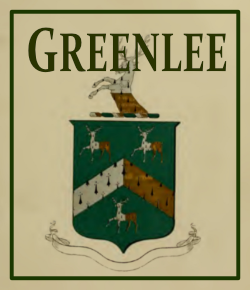 |
 |
 |
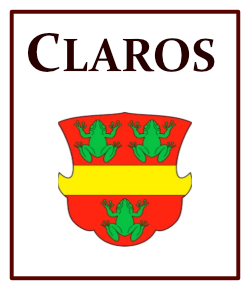 |
Categories
Genealogy
- Genealogy Portal
-
Search genealogical information related to the Greenlee, Murillo, Twyman and Claros families. Please contact us if you think we're related and can help each other in expanding our ancestry trees.
